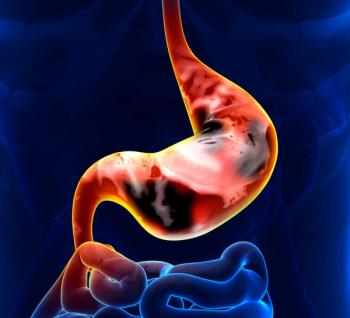
Oncology NEWS International
- Oncology NEWS International Vol 10 No 9
- Volume 10
- Issue 9
Oxaliplatin/Irinotecan Promising in Advanced Colon Cancer
SAN FRANCISCO-In advanced colorectal cancer, the combination of oxaliplatin (investigational) and irinotecan (Camptosar) is beneficial as a first-line therapy, according to phase II clinical trial results presented at the 37th Annual Meeting of the American Society of Clinical Oncology (abstract 538).
SAN FRANCISCOIn advanced colorectal cancer, the combination of oxaliplatin (investigational) and irinotecan (Camptosar) is beneficial as a first-line therapy, according to phase II clinical trial results presented at the 37th Annual Meeting of the American Society of Clinical Oncology (abstract 538).
Preclinical evidence that oxaliplatin and irinotecan are synergistic in combination provided the rationale for the current trial, noted Werner Scheithauer, MD, Vienna University Medical School.
In this randomized, multicenter trial, the combinationoxaliplatin 85 mg/m² and irinotecan 175 mg/m², both given as a 2-hour infusion on days 1 and 15 every 4 weekswas compared with raltitrexed (Tomudex, investigational in the US) 3 mg/m² every 3 weeks as a 15-minute infusion).
A total of 92 chemotherapy-naïve patients with measurable metastatic colorectal cancer were entered into the trial. When patients progressed, they were crossed over to second-line treatment with the other study regimen.
At the initial dose level, the oxaliplatin/irinotecan regimen caused severe adverse hematologic and gastrointestinal reactions in 10 of 20 patients, generally during the first two courses. Tolerance became acceptable after the irinotecan dose was reduced to 150 mg/m².
Objective complete responses were seen in 3 patients on the combination regimen (6.5%) and in none on raltitrexed. Partial responses were reported in 17 patients on the combination (37%) and in 9 (19.6%) on raltitrexed. Stable disease was seen in 15 (32.6%) and 16 (34.8), respectively, and progression in 9 (19.6%) and 17 (37.0%), with the remainder not evaluable.
The overall response rate for the oxaliplatin/irinotecan arm was 43.5% and for raltitrexed, 19.6%. Improvements in WHO performance scores for the patients on the combination (62% vs 29%) were also significant (P = .021).
Dr. Scheithauer reported that, at a median follow-up of 15 months, progression-free survival was improved for the experimental arm (7.1 vs 5 months, P = .0033), but overall survival was not (16 vs 16.5 months). Dr. Scheithauer termed the lack of an overall survival benefit for the combination arm "surprising," but suggested that it may be explained by the crossover results.
Crossover to the other regimen after progressive disease occurred in 32 raltitrexed patients and 27 combination patients. In those receiving the combination as second-line therapy, the radiologic response rate was 33%. In the group receiving raltitrexed as second-line therapy, it was 14%.
"The impression of a promising therapeutic potential of the experimental combination is being supported by the high response activity noted in the raltitrexed control arm after crossover to oxaliplatin/irinotecan," he stated.
Adverse events were tolerable for the reduced-dose combination arm, Dr. Scheithauer said. Neutropenia occurred in 81% of patients, alopecia in 65%, nausea/emesis in 62%, peripheral sensory neuropathy in 62%, and diarrhea in 46%. In the raltitrexed control arm, the most frequently reported adverse events were neutropenia (52%), transient elevation of liver function parameters (52%), nausea/emesis (43%), asthenia (30%), and diarrhea (30%).
Dr. Scheithauer concluded, "In agreement with the study rationale, the experimental combination was found highly effective and superior when compared to the raltitrexed control arm." Future trials, he noted, should address the relative value of sequential treatment vs aggressive front-line treatment in various prognostic subgroups.
Articles in this issue
over 24 years ago
Avon Launches ‘Kiss Goodbye to Breast Cancer’ Campaignover 24 years ago
Occult Tumor Cells in Marrow Predict Breast Cancer Survivalover 24 years ago
No Long-Term Advantage for Complete Response to Neoadjuvant Chemo/RTover 24 years ago
New Agents Tested with 5-FU in Rectal Cancerover 24 years ago
Anticonvulsants Can Alter Irinotecan Metabolismover 24 years ago
Thalidomide Appears Effective in Early-Stage Myelomaover 24 years ago
New ‘Goals for Pain Relief’ Scale Proves Reliable in Pilot Studyover 24 years ago
GVAX Autologous Vaccine Shows Activity in Lung CancerNewsletter
Stay up to date on recent advances in the multidisciplinary approach to cancer.

















































































